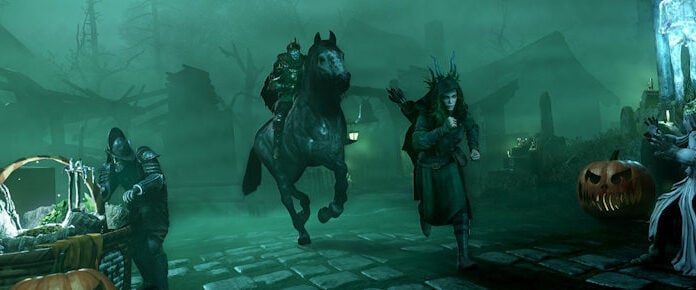
As Kickstarter projects successfully funded via the power of nostalgia have proven, gamer loyalty can burn strong even decades after experiencing titles that make such a profound impact. For a subset of players, the Ultima franchise will forever be one of the most influential RPG series in existence, which is why thousands of them have migrated over to Shroud of the Avatar to give it such an active following during its early access period.
Shroud of the Avatar isn’t merely a game being formed, but a community coming together to live in this virtual world. Massively Overpowered caught up with Portalarium executive producer Starr Long this week to get a status check on the project and to ask a few burning questions about how SOTA plans on being a worthy spiritual successor to Ultima.
 Massively Overpowered: Is Shroud of the Avatar still on track for a 2015 release for Episode 1?
Massively Overpowered: Is Shroud of the Avatar still on track for a 2015 release for Episode 1?
Portalarium: Yes. That date remains our goal, and we feel on track to go live about that time. Yet we remain committed to only launching if the game is really ready. That means all the major features and content are complete, balanced, polished, and fun. We are in a good position because we have no retail presence, nor have we purchased a giant media campaign for launch that is tied to a specific time window. This means we have more flexibility to launch when the game is ready.
SOTA has enjoyed a long-running and rather active testing period. What’s kept the community coming back, release after release? Why would people be playing the game now if it’s going to be wiped?
There are multiple reasons a portion of the community comes back every release. Part of it is the simple fact that we release a major update to systems and content each and every month (and always on time). Then, we follow that up by really listening to the player feedback and responding to it in the very next release.
This makes players feel that they are helping to develop the game and they want to see what influence they are having each month. Some simply come back for the special hat/mask that is only available during that month’s release.
However, the biggest draw is likely the community itself. The players have multiple events every single day, including PVP tournaments, theatrical productions, dance parties, training sessions, maze building, maze runs, sermons, home decoration contests, etc. One of the newer events that I love is something called Gust Ball. This event uses the Air Magic spell “Gust,” which moves the target backwards. One player volunteers to be the ball, and the two teams try to push the player “ball” into a goal using only the Gust spell. It’s a lot of fun!
SOTA’s combat and character system is different from the MMO norm, especially with its slot machine-like hotbar. What are the difficulties in teaching this to new players? Why not stick with older proven systems (in other words, what about SOTA’s system is so much better as to require the risk of frustrating players who have to learn this system)?
It has been challenging to teach new players, which is why we start everyone with a traditional locked hotbar and only advance them later to the deck mechanic. The most consistent critique we hear is that you have to spend too much time looking at the hotbar, so in Release 18 we have made some modifications that we think address this issue and combine the predictability of a locked hotbar with the dynamism and combinatorial aspects of the deck system.
 Are there ways to buy houses and housing plots using in-game currency in addition to purchasing ones from the game’s cash shop?
Are there ways to buy houses and housing plots using in-game currency in addition to purchasing ones from the game’s cash shop?
Yes, houses and house plots can be purchased in the game using in-game currency. It only takes a reasonable amount of gameplay to earn enough to purchase them.
For former Ultima players, what shout-outs to the series should fans be looking for in SOTA?
Fans should expect this game to feel very much like a Lord British production. These LB touches include ethical parables and a great deal of attention to details.
For instance, in our latest release (Release 18), we have added a completely functional astronomical system with planets, moon, constellations, etc; all of which properly phase in and out while moving through seasonal changes. This will in turn be tied into actual game mechanics over the next several releases. Some mechanics, like spawning certain creatures only at night, will be obvious. Other mechanics will be more interesting; like making it so you can only get a certain property on a crafted item if it’s crafted when a certain celestial configuration is happening.
How much of the game is crowdsourced? What challenges and benefits has Portalarium gained by utilizing that?
Ninety-nine percent of the music is crowdsourced and our goal is to have a similar percentage of the sound effects crowdsourced. About 10% of the world props (chairs, tents, bedrolls, braziers, rugs, etc.) are crowdsourced.
The biggest challenge is having the bandwidth to manage this process when we have such a small team. We have to give the community enough information about what we need and how we need it made. All of which has to be followed up with a review process which includes providing feedback if we don’t accept the submission “as is.” The benefit, though, is that in some cases, like the music, we get stellar results that we would literally have no other way to accomplish.
Thanks for talking with us!















